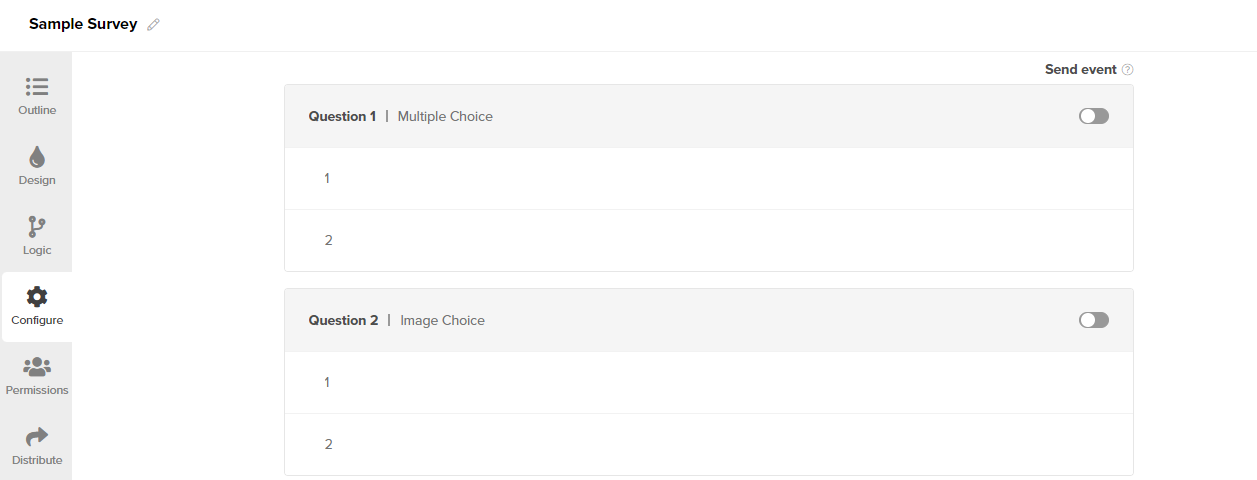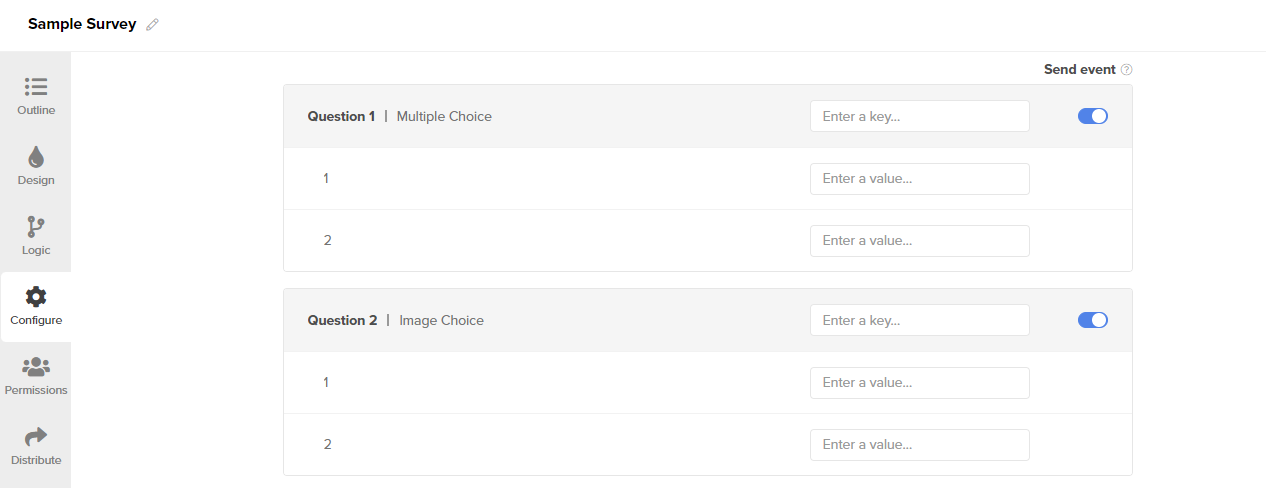Standardize and sync your survey data with your databases, marketing and SaaS tools to enrich, personalize and re-market.
With this integration, you can send labeled question responses to Segment which can then be passed to any of the different systems that Segment integrates with.
Note: The Segment integration is limited to one integration per survey. Additionally, this integration is an Enterprise level feature.
🏠 Where it lives
- Navigate to your survey's integration home page.
- Click + Add on the Segment Customer Data integration.

🔨 How it works
- Start by selecting your Tracking method. Segmanta integrates with two different types of communication via Segment’s API (which is the same as Segment’s write key). Those include:
- Track: It records any actions your users perform, along with any properties that describe the action. Data will be sent as an event (i.e. consumer purchased, consumer reached sign-up), with additional information sent as properties.
- Identify: It lets you tie a user to their actions and record traits about them. Data will be sent as a trait.
- Track: It records any actions your users perform, along with any properties that describe the action. Data will be sent as an event (i.e. consumer purchased, consumer reached sign-up), with additional information sent as properties.
Note: Event name will only appear for Track.
Important: Only events that are toggled on will be sent to Segment. You will not be able to retroactively send previously collected data using this integration.
- Next, add your Write Key
Important: If you add your Segment Write Key to a Survey, you are responsible for the data collected by Segment.
- Toggle on the actions you want to act as triggers to send data to Segment.

- Label the question pages or subjects and answers that you want sent to Segment using the Key and Values as defined in Segment.

Important: Label everything that is or might be relevant for you to pass to Segment. If a question, subject or answer choice is not labeled with a key and/or value, you will not have what you need to locate the data in Segment.
- Optionally, set context fields that will be sent within the Segment context object. Context fields can be single-level or multi-level. You may also send additional static data as traits. Enter the key and value for traits.
💼 What it does
- Segment has a progressive profiling approach. This means when a consumer is identified, it is anonymous before additional identifiers are added, which eventually form a user ID.
- Therefore, if you are sending your survey to previously identified Segment users, you must provide their ID to the Segmanta survey by using a seg_erid, Segmanta’s external respondent ID.
- You could also pass an anonymous user id using the ajs_aid param (which is not recommended by Segment). If neither parameter is passed into the Segmanta survey, Segment will consider the user anonymous and assign them with a new ID.
- Segmanta provides support for passing a list of Segment Custom ExternalIds through a dedicated URL query parameter sgmnt_ceids.
Pro-tip:
For example, the following data
"sgmnt_ceids": [
{
"collection": "users",
"encoding": "none",
"id": "1234567890",
"type": "phoneNumber"
}
]
is to be passed as:
sgmnt_ceids[0][collection]=users&sgmnt_ceids[0][encoding]=none&sgmnt_ceids[0][id]=1234567890&sgmnt_ceids[0][type]=phoneNumber
Or for both embed types:
<script>
window.SEGMANTA__USER_METADATA = {
"sgmnt_ceids": [
{
"collection": "users",
"encoding": "none",
"id": "1234567890",
"type": "phoneNumber"
}
]
}
</script>
Note: The externalId encoding field is always set to “none” and is not needed to be passed in the querystring. The collection field value is assumed to be ‘users’ if omitted.
.png?height=120&name=300x300%20(1).png)